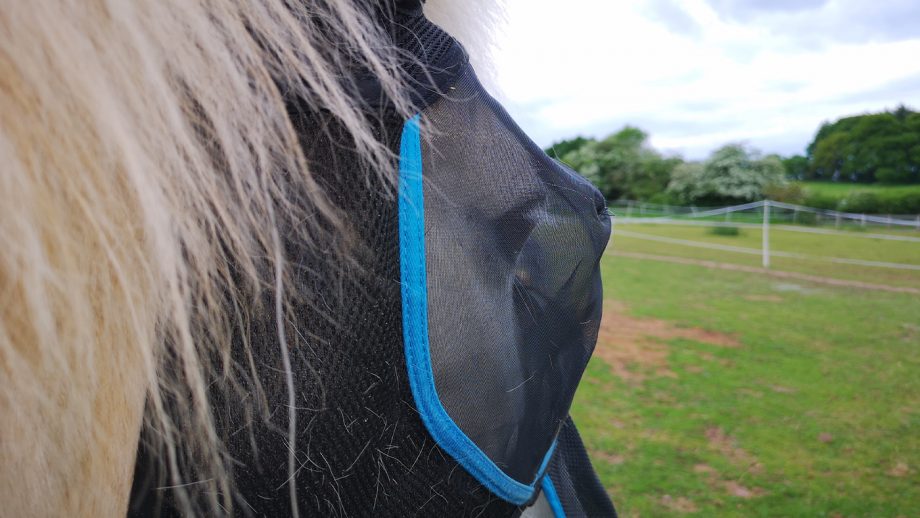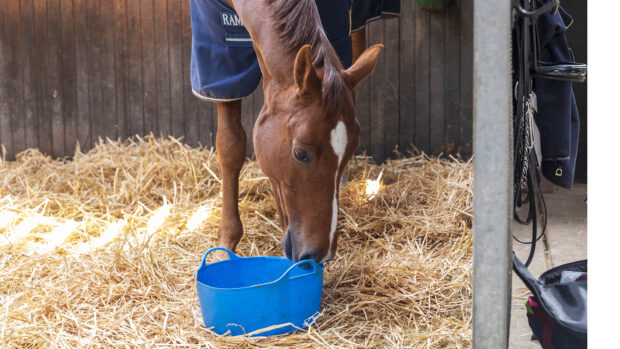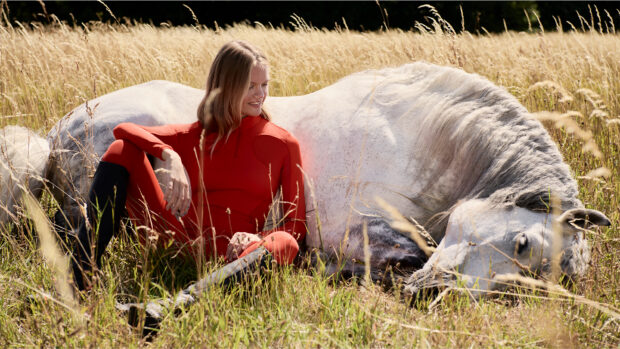Living in a country with a climate as changeable, and at times inclement, as our own, it’s easy to under estimate the risk of sunburn in horses, with animals who live out all through the summer being particularly vulnerable.
“The pigmentation in hair and skin protects against the penetration of ultraviolet light, so any non-pigmented horse or an animal with white-skinned areas is prone to sunburn damage,” says Dr Janet Littlewood MRCVS, a specialist in veterinary dermatology. “Although the horses most at risk are those kept at permanent pasture in the summer months, it’s important not to forget that sunlight can also be damaging at other times of the year.”
The face and heels of horses are most commonly affected by sunburn because these often have non-pigmented patches and less hair coverage.
“It’s not a breed-related problem because nearly all breeds produce horses with white facial markings and legs,” explains Dr Littlewood, “but owners of animals with a thin coat should be particularly careful.”
What harm does sunburn cause?
In most horses the only harm caused by sunburn is occasional discomfort, redness and peeling. However, repeated damage can cause significant long-term problems, warns Dr Littlewood.
“It can result in thickening and scaling on the surface of the skin [keratosis], which can sometimes transform to skin cancer — squamous cell carcinoma,” she says.
“Ultraviolet light exposure also has adverse effects on skin immune mechanisms. Hence, horses with white legs tend to suffer more problems with infections, such as bacterial folliculitis and mud fever. These conditions tend to become worse and harder to manage with time.”
How to prevent sunburn in horses
Ensuring fields have shady areas is essential, but even the most severe weather conditions won’t stop some horses grazing. There are equine sun creams available, but some owners prefer to use products made for people — high-factor water-resistant creams that are safe for children are a popular choice. But, unlike a child, it isn’t possible to bribe a horse into co-operating with ice-lollies and treats. Coloured “stick” sunblocks can be easier to apply and show up any “missed bits”.

Aniwell Filtabac at viovet.co.uk
We tested this sun cream and found it stayed on really well, while doing a great job of soothing and protecting the skin. In our opinion, it’s well worth the investment, plus you can use it as a general antibacterial cream.
Fly masks that cover the head and muzzle may provide some relief, while UV-protective summer sheets can help shield horses with more widespread sensitive areas. You can also buy muzzle protectors that attach to a field-safe headcollar for additional UV protection.
What to do if your horse is sunburnt
Dr Littlewood suggests that where prevention has come too late, horses should be brought inside until the problem has been resolved.
“If skin is blistered or oozing, veterinary attention should be sought. Generally, treatment is symptomatic: gentle topical bathing to remove crusts; emollient creams and antibiotics if there’s evidence of secondary infection,” she says.
All owners should monitor signs carefully, especially in an animal that has become inexplicably more sunburnt, to ensure that the horse isn’t suffering from photosensitisation. This is a condition where non- and lightly pigmented skin reacts abnormally to ultraviolet light.
“This occurs when there are reactive compounds — photosensitisers — in the horse’s circulation that cause tissue damage,” explains Dr Littlewood.
Photosensitisers can be found in some drugs, dyes and plants, including St John’s Wort and some clovers. Other plants, such as buttercups and cow parsley, contain light-reactive substances that can be absorbed directly into the muzzle during grazing.
“The prognosis for horses with primary photosensitisation is good,” says Dr Littlewood. “The underlying cause can be removed and the sores treated.
“Photosensitisation can also occur when a horse has severe liver damage, most commonly caused by eating ragwort. When the liver isn’t functioning properly, it cannot process chlorophyll fully. This results in the presence of photosensitive phylloerythrin in the tissues. The prognosis for horses with this ‘secondary’ photosensitisation is poor, so any animal showing clinical signs of the condition should undergo thorough investigation of liver function by a vet,” warns Dr Littlewood.
You might also be interested in…

Tried and tested sun creams for protecting your horse’s pink skin this summer

Need to protect your horse from UV rays this summer? Check these out…

Discover the ideal fly mask to keep your horse comfortable all summer long

Slip slop slap: the best sun cream for dogs

Sweet itch in horses: what all horse owners need to know

Subscribe to Horse & Hound magazine today – and enjoy unlimited website access all year round
Horse & Hound magazine, out every Thursday, is packed with all the latest news and reports, as well as interviews, specials, nostalgia, vet and training advice. Find how you can enjoy the magazine delivered to your door every week, plus options to upgrade your subscription to access our online service that brings you breaking news and reports as well as other benefits.





